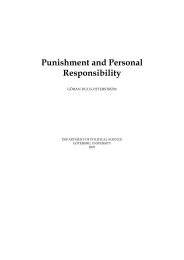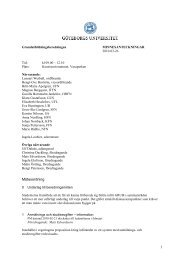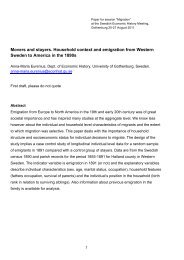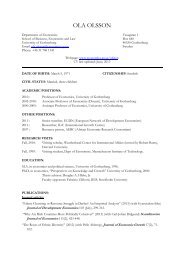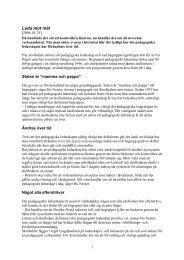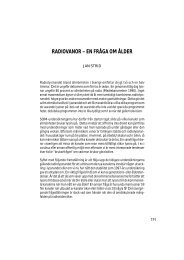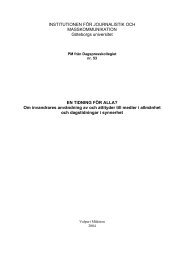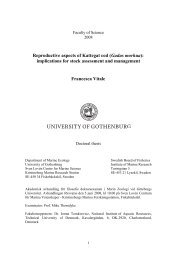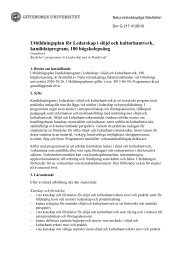Equal Opportunities Work - Theories about Practice
Equal Opportunities Work - Theories about Practice
Equal Opportunities Work - Theories about Practice
Create successful ePaper yourself
Turn your PDF publications into a flip-book with our unique Google optimized e-Paper software.
or explain what fundamental changes in society would have to take place if we<br />
were to introduce a fair distribution of power between the sexes. Although our<br />
gender analysis was not performed to promote equal opportunities, it still gives<br />
rise to questions such as the following: Why is there inequality today? Should<br />
things not change? What would the consequences of such changes be?<br />
<strong>Equal</strong> opportunities work without a gender perspective often means that the<br />
number of people of the underrepresented sex in the (existing) organization in<br />
question increases, for example through recruitment campaigns. As we have<br />
seen, such measures may be justified both in terms of justice and of quality<br />
improvements.<br />
Imposing a gender perspective on equal opportunities work means working<br />
to ensure changes with a view to altering the structure of the organization and<br />
throwing its established norms and aims into question. This is a deeper<br />
approach, in which equal opportunities work is based on an understanding of<br />
both the lack of equality in society and of the mechanisms that pose obstacles<br />
to equality and that uphold unfair relationships between the sexes. This<br />
understanding is vital to achieving sustainable equality of opportunity-and real<br />
change in an organization.<br />
What are the actual differences between working with equal opportunities<br />
with and without a gender perspective? We can elucidate this by examining an<br />
example, using an explanatory model known as " the male as normative".<br />
<strong>Equal</strong> opportunities work without a gender perspective can, for instance, mean<br />
not taking account of the male norm. The practical consequence is often that<br />
the "shortcomings" of women or girls are highlighted: their lack of interest in<br />
technology and the natural sciences, their inability to "help themselves to their<br />
fair share", their disinterest in holding management positions, ad infinitum.<br />
And it would then be these "faults" that were used to determine how equal<br />
opportunities work in practice was formulated. Networks of mentors would be<br />
set up, recruitment campaigns waged with a view to rectifying the problems<br />
and thus increasing the numbers of the underrepresented sex, just to mention a<br />
few examples.<br />
<strong>Work</strong>ing with equal opportunities on the basis of a gender perspective, on<br />
the other hand, would mean considering the problem complex surrounding the<br />
male norm, and would cast an entirely different light on the matter. The<br />
problem would no longer be regarded as a problem of women as individuals,<br />
but rather as a problem in the organization and the surrounding society. This<br />
would open people's eyes to the general structural discrimination of women<br />
and women's experience. The aim of equal opportunities work would then be<br />
29




